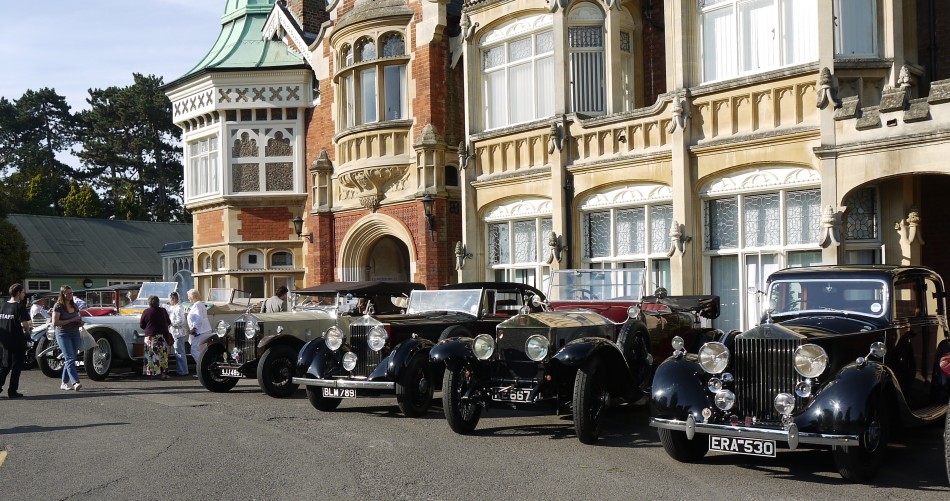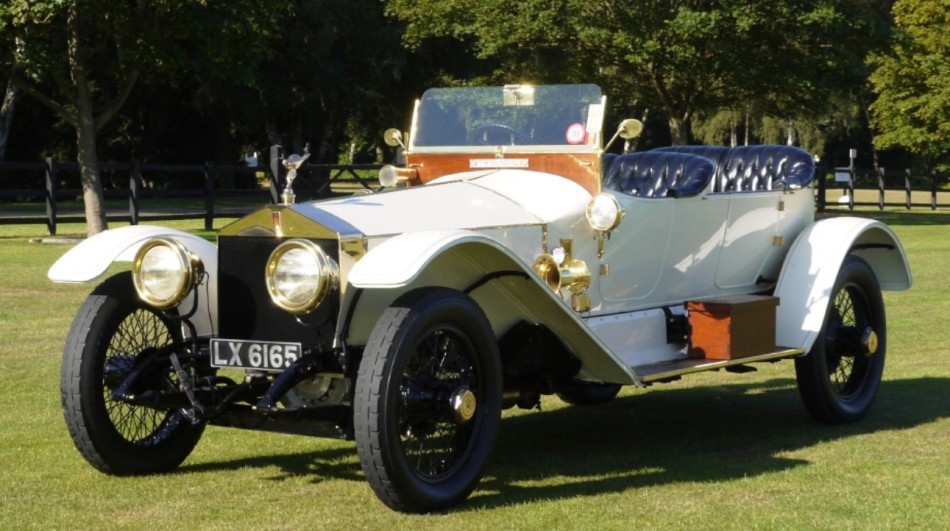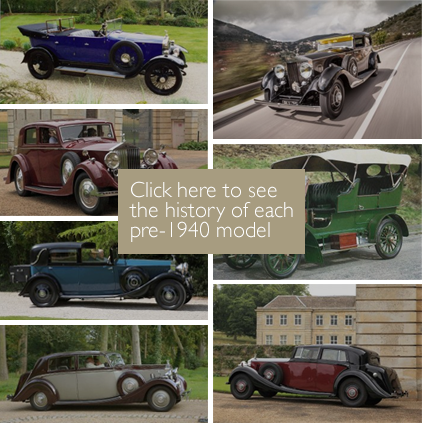Workshop Hints for small horsepower Rolls-Royce cars – Rolls-Royce 25/30: Overhaul of cooling system
INTRODUCTION
Ownership of any Pre-1940 Rolls-Royce is a delight. Good cars of this period are elegant to look at, very comfortable, reasonably quiet and properly maintained are remarkably reliable. Each body style is different and people enjoy looking at and admiring cars of this vintage. Ours cars can give much pleasure.
Ownership of such fine cars naturally carries certain responsibilities. Owners are generally expected to be well behaved and courteous, but in exchange ownership bestows great privilege and access unobtainable to the ordinary motorist. Doors are opened simply because of the reputation of the car.
Each model has its own distinctive characteristics, but each type can make a superb touring car even in modern road conditions. The engines are tuned to emphasise flexibility and so the need to change gear is much reduced, whilst the controls are all relatively light, including the steering once on the move. It is thus perfectly possible to drive all day and feel no more tired than in a modern car. The driving position typically has plenty of space and the gear change falls conveniently to the right hand.
Performance of all the models, albeit leisurely by modern standards, is typically quite capable of keeping up with modern traffic especially on our increasingly speed restricted country roads both here and on the Continent of Europe. Only on mountainous roads, or on motorways, are you likely to be going noticeably slower than the surrounding traffic. Depending on the model, cruising speeds are in the range of 50 to 75 mph (80 to 120 kph). In towns and cities the accuracy of control and the respect typically afforded to the cars makes passage relatively trouble free.
Running costs are unlike those of a modern car. Once brought up to standard, the cars need regular lubrication but rarely need major overhaul and should not use much oil. Tyres are generally available and so the major cost is the petrol consumption which is rarely better than 20 mpg, unless driven very gently and on the large horse power cars is typically in the range of 10 to 12 mpg. Fuel used in all cars is 95 Octane unleaded, preferably with minimum ethanol content, as ethanol can attack copper and brass, both of which are used extensively in the fuel system. Unlike modern cars which depreciate rapidly, these cars tend to appreciate year on year, general prosperity and legislation allowing. In additon, they benefit by not being subject to road tax and, generally, enjoy very low insurance rates.

CHARACTERS OF LARGE AND SMALL HORSE POWER CARS
From 1907 to 1923 Rolls-Royce had a one model policy, making what was known initially as the 40/50 and later as the Silver Ghost. From then until 1939 the Company had a two model policy, the large horsepower 40/50 models of approximately 7 ½ litres, (Silver Ghost, Phantom I, Phantom II and Phantom III) and the small horsepower models of between 3 and 4 ¼ litres ( 20hp, 20/25, 25/30 and Wraith). Both types are tremendously pleasurable to own but are quite different in their appeal and to a degree this can affect their usage in modern times.
Large Horse Power cars are quite simply very large and impressive cars. So, one does not tend to use them for shopping trips or popping down to the pub. Instead they are ideal for the grand occasion or taking a break for a few days exploring the country, or even better going off for a long tour on the Continent. They instil great confidence,in that you can set off for anywhere you like and they will just run better and better until you arrive back safely after completing a very enjoyable tour. They are cars that have a long loping stride.
Small horse-power cars are more delicate and run with the precision and quietness of a well oiled sewing machine. Their engines are smaller and so run faster but very smoothly giving a very refined if slightly busy feel. They are nimbler cars and are easily maintained and are therefore highly suitable for more frequent and regular use on shorter journeys to go down to the pub or wherever. Given the higher cruising speeds possible on modern roads, it is quite common to find an overdrive has been fitted to the smaller horsepower models to improve their cruising ability at higher speeds. Fitted thus, some regularly cover long distances each year.
COACHWORK
From inception, a wide variety of coachwork has been available on Rolls-Royce Motor cars depending on the role they were called on to play. At one end of the range would be two or light four seater cars that were the super cars of their day, causing a stir wherever they went and capable of a top speed twice that of a normal car. At the other end were the very large six or seven seat limousines designed to carry distinguished people in the style to which they were accustomed with absolute smoothness and reliability.
Our club contains all types, but the majority tend to favour open touring cars for cars built in the Edwardian period or the 1920s. These tend to be lighter and more manageable than the limousines, although inevitably both driver and passenger are more exposed to the elements! Four seater tourers are very usable for taking a couple and two friends or family members out on day trips, but equally make an ideal touring car for two with their luggage in the back. Cars built in the 1930’s tend to be more capacious and open cars became full convertibles with wind up windows and proper weather protection. If closed bodywork is preferred, many chose saloons or coupes in preference to the large limousines, simply because they are more usable and manageable for touring.

MAINTENANCE REQUIREMENTS
One of the surprises of owning an early Rolls-Royce is the amount of regular maintenance, or more specifically lubrication, that was expected of the Chauffeur. Several things need to be attended to on a daily basis, with others weekly and yet more monthly. This is particularly so on a pre 1914 Silver Ghost. Thereafter, it gradually became easier as it became clear that particularly on the smaller horse power cars the car would be driven by the owner rather than by a chauffeur.
Most maintenance is pretty straightforward with no special skills required. It is just time consuming and the lubrication is inevitably a rather messy job! Fortunately in the 1930’s cars were fitted with one shot lubrication which when working properly would lubricate the majority of the chassis points with a single pump on a foot pedal beside the clutch. All lubricants and oils are readily available from classic oil suppliers
Given proper lubrication, a good car should run for many years before the need arises for a visit to a skilled mechanic for a general check up of the brakes for wear or to tune the engine. Major components are remarkably reliable and go on and on for years without need for further attention once brought up to a high initial standard. Fortunately in England there are many expert restorers who can bring a car up to the desired standard. Thereafter the owner can very largely keep it there himself with a little effort and knowledge and the occasional bit of help from an expert. Fortunately the owner’s manuals originally provided with the cars give very clear instructions on what is required and when. Reprints of these are available and originals often come up for auction.

